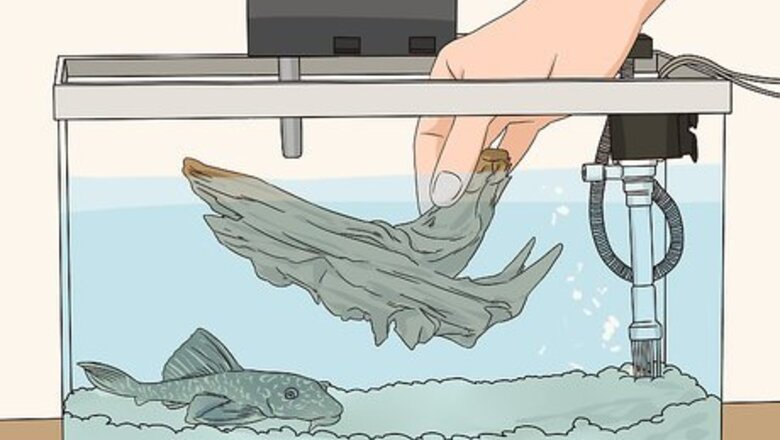
views
Choosing the Right Food
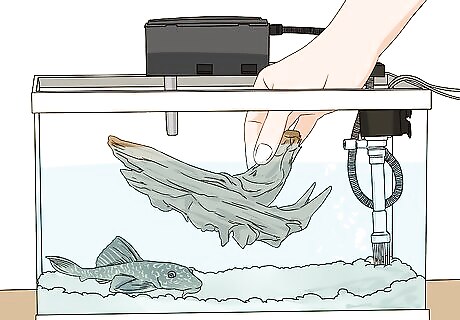
Keep driftwood in the tank at all times. Your pleco needs lots of fiber in their diet, and they can get it from driftwood. Make sure to provide several pieces of driftwood in the aquarium at all times so your pleco can suck and scrape it off. The tiny pieces of driftwood the pleco eats help with its digestion. Rather than collecting driftwood yourself, choose real driftwood sold at fish or aquarium stores to ensure it is safe for your pleco.

Feed your pleco algae wafers. To ensure your pleco has enough algae in its diet, you should supplement the algae in the tank with algae wafers. These wafers sink to the bottom of the tank so that your pleco can find them easily. Algae wafers can be found at your local pet shop or aquarium store.
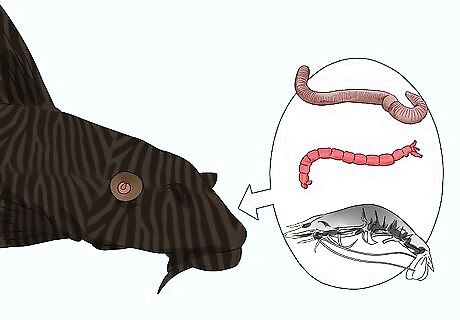
Add meat to your pleco’s diet. Plecos are omnivores, meaning they eat plants and animals. Your pleco will enjoy earthworms, bloodworms, and shrimp. You can choose between fresh or frozen varieties. Earthworms, bloodworms, and shrimp can be found at pet shops and fish stores.

Feed your pleco fruit and vegetables. Your pleco will enjoy a variety of vegetables, like broccoli, shelled peas, lima beans, kale, celery, cabbage, and zucchini. Though your pleco may enjoy small pieces of cantaloupe, honeydew melon, breadfruit, and papaya, you should avoid providing acidic fruits or veggies, like oranges and tomatoes. Simply wash and slice the fruit or veggies into small pieces to prepare them for your pleco.
Picking the Right Feeding Schedule
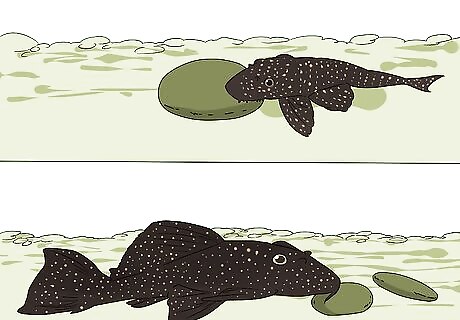
Consider your pleco’s age and size. If you have a small juvenile pleco, they may be able to get by on the algae in the tank, algae wafers, and scraps left over from feeding other fish. However, if the pleco is the only fish in the tank, it will need to be fed more often. Also, as your pleco matures and grows, it will need more variety in its diet and a larger amount of food. Young plecos can subsist on one algae wafer per day. Once the pleco grows to 24 inches, it is considered mature.
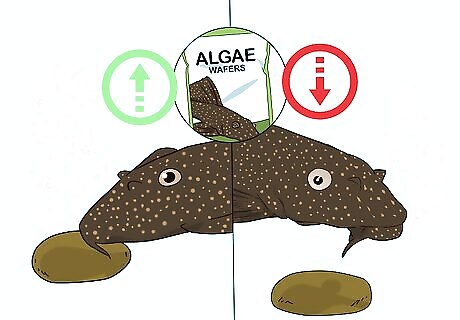
Observe your pleco after feeding. After you provide food for your pleco, watch and see if your pleco gobbles it down. If your pleco immediately begins to munch on the food, they may be overly hungry and need to be fed more often. If your pleco ignores the food, they may need to be fed less often. Avoid overfeeding your pleco, as this can ultimately harm it. There is no set amount to feed—just use your common sense. Ultimately, you don't want there to be too much leftover food, as this will break down and cause water quality issues in the aquarium.
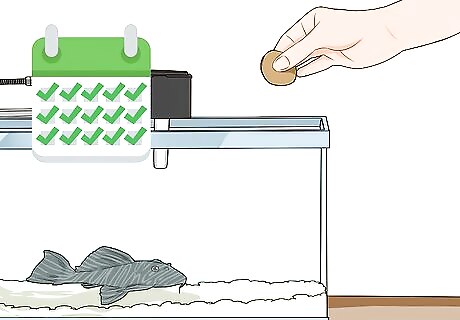
Offer at least one algae wafer per day. Your home aquarium will not provide enough algae to keep your pleco full. Give your pleco an algae wafer at night before you go to bed, as plecos are nocturnal and eat at nighttime. If the wafer has been completely consumed by the time you wake up, you can offer another algae wafer to your pleco in the morning.
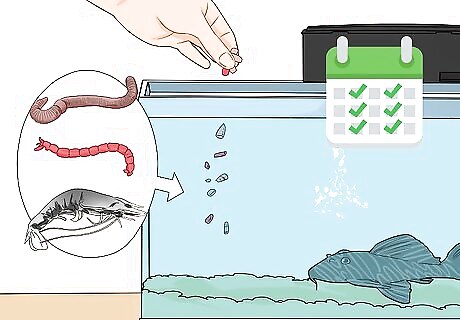
Give meat to your pleco once or twice per week. As an omnivore, your pleco will enjoy the occasional meaty treat. Give your pleco earthworms, bloodworms, or shrimp once or twice a week. You can choose from fresh, frozen, or pelleted meats. If using fresh meat, cut them into small pieces before dropping them into the tank. Give your pleco a few small cut-up raw shrimp or several shrimp pellets, or one cut-up earthworm or bloodworm as one serving.
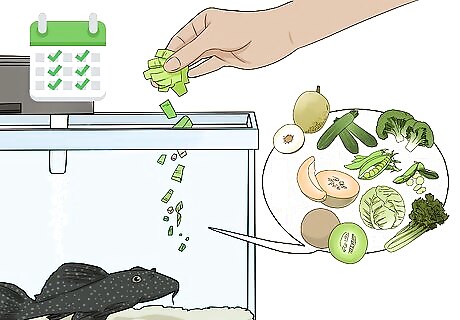
Feed your pleco fruit or vegetables once or twice per week. Fruit and veggies will provide your pleco with fiber, which they need to stay healthy. Offer your pleco fruit or vegetables once or twice per week. Cut them up into small pieces before adding them to your tank, and add an aquarium weight so they sink to the bottom of the tank. Alternatively, you can use an aquarium clip to attach the food to the side of the tank near the bottom. Give your pleco a serving the size of a silver dollar, such as one slice of zucchini or a small piece of broccoli.
Keeping Plecos Healthy
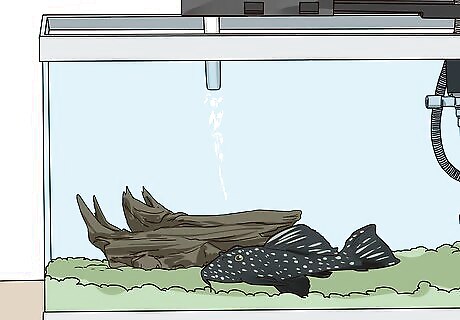
Keep only one pleco in an aquarium. Catfish like plecos often fight each other when placed in the same aquarium. Some even fight to the death, so it’s best to keep only one pleco in an aquarium at a time. Plecos generally do well in a tank with most other types of fish, except for piranhas and oscars.
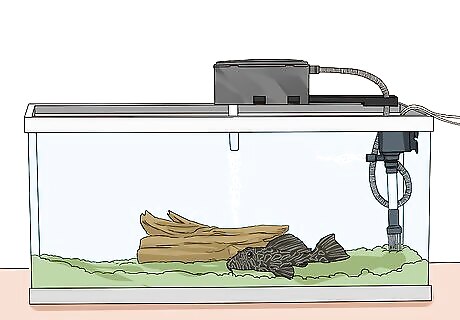
Provide them with plenty of room. In the aquarium, plecos can grow up to 18 inches (46 cm) long! This means you’ll need an aquarium larger than 100 gallons (380 L). You can choose a smaller species of pleco, like the Golden nugget, Zebra, Clown, or Bristlenose pleco, if you have a tank smaller than 100 gallons (380 L). For example, a Clown pleco can live comfortable in a 20-gallon tank.
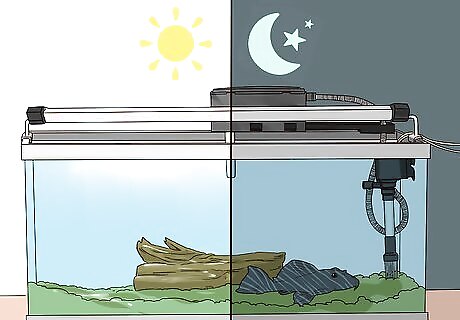
Set up a regular light schedule. Plecos are nocturnal, so they need darkness to signal it’s time to move around and feed. Therefore, it’s not ideal to keep your aquarium lights on constantly. Set a timer on your aquarium lights to replicate natural light cycles (meaning that the lights are on during the day and off at night).
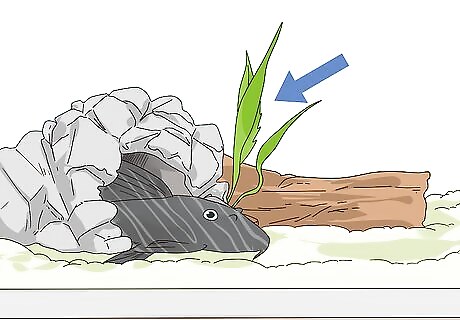
Place hiding spots in the tank. Hiding places help your pleco feel secure and safe. They will spend much of their time hiding, especially during the day. Put small tunnels or caves designed especially for fish in the aquarium, or use sections of PVC pipe.
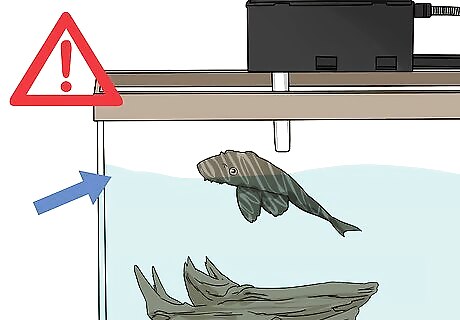
Don’t fill the tank all the way up. Avoid filling the tank all the way to the top, as plecos come to the surface to gulp air in order to improve their buoyancy. If the tank is completely filled, they may not be able to get the air they desire, or they may bump their snout on the lid and injure themselves.
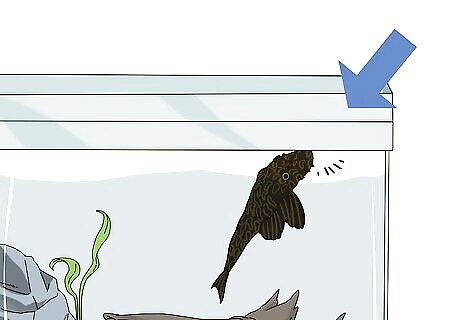
Ensure the lid on the tank is secure. Plecos are able to jump out of the water, and if the tank has a loose lid they may be able to escape, potentially injuring or killing themselves. For this reason, you need to make sure the lid on your tank is secure.












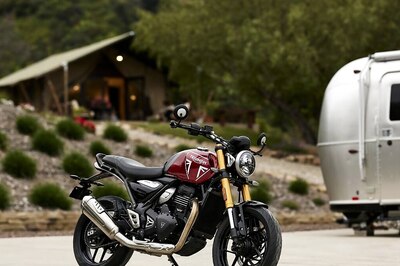


Comments
0 comment